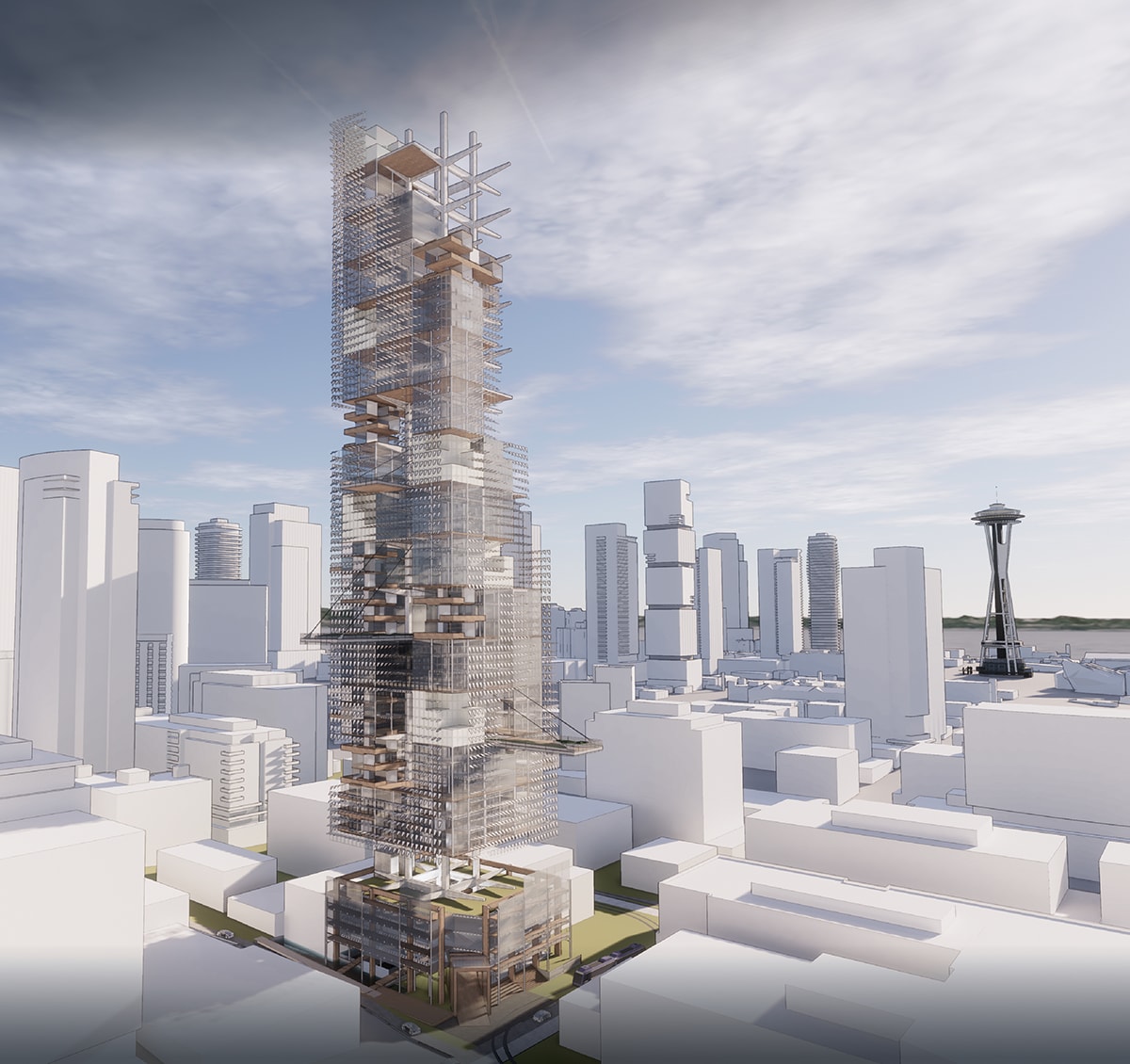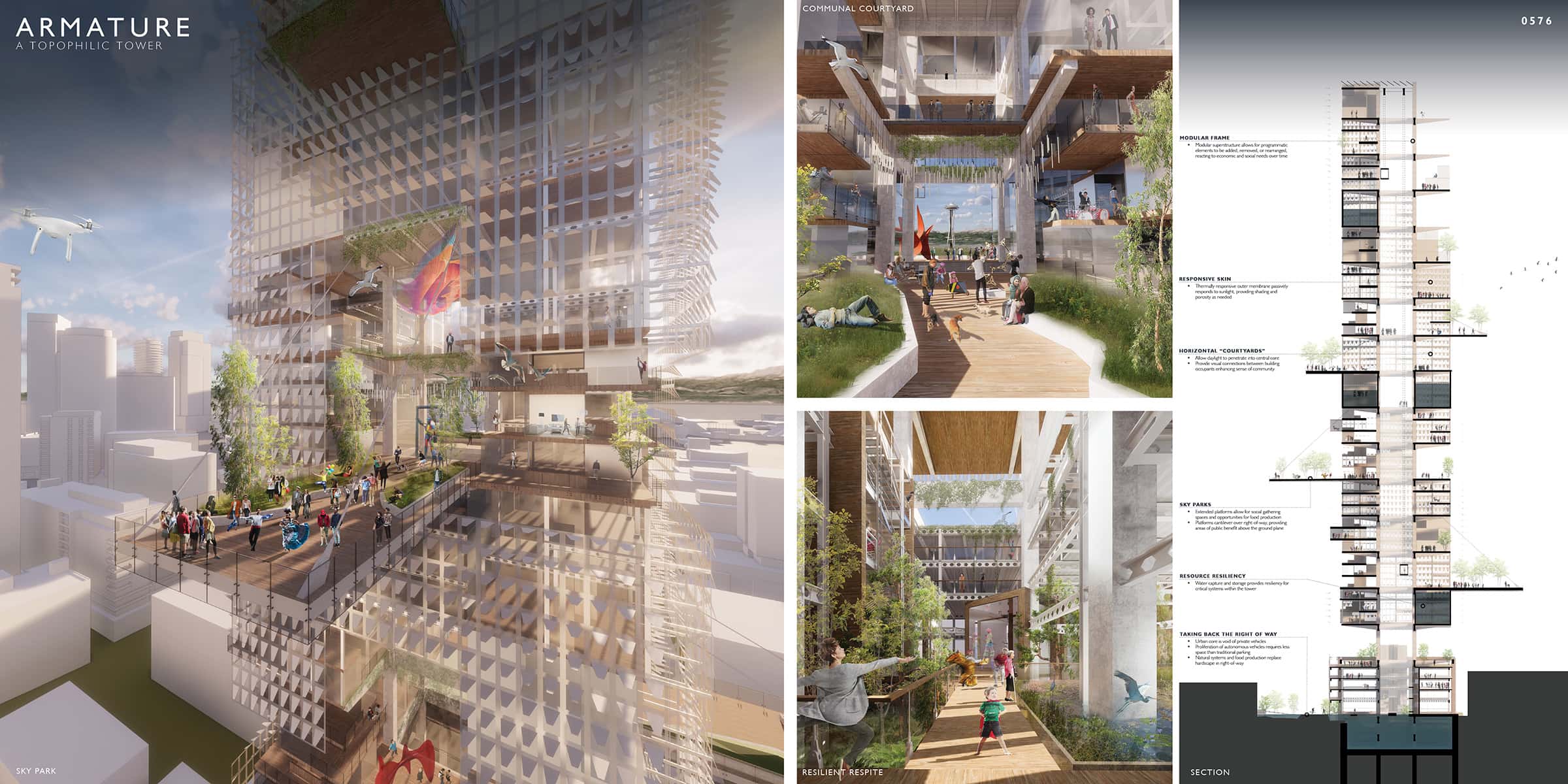Honorable Mention
2019 Skyscraper Competition
Weber Thompson Architects
Kristen Scott, Cody Lodi, Myer Harrell, Kristen Clemens, David Burpee, Nicole Winn, Erin Hatch, Leslie Riibe, Allison Rose, Weston Hambliton
United States

I remember watching the rapid transformation of our beloved city from the window of an overcrowded bus. On commutes to and from work I would wonder: how can we as a community embrace this change, and adapt without losing our identity? This place we love grew from a humble city to a booming, unrecognizable metropolis. Despite the technology that was meant to bring us together, we were left feeling less connected than ever – to each other, to nature, and to the small-community values that defined our cozy hidden nook in the northwest corner of the country.
In hindsight, ARMATURE was an ideal that Seattle followed to avoid becoming the hollow shell of a city we now see elsewhere in the country. Its topophilic concept was built to be adaptive and resilient, responding to a changing environment that has shaped the development of the thriving city we live in today. Author and humanist geographer Yi Fu Tuan described topophilia as “a framework to discuss all the different ways that human beings love a place.” Our perception and love of place is influenced by the interconnection of our sociocultural, natural, and built environments. The overlap of these environments are framed by the idealized qualities of resiliency (natural + built), regeneration (sociocultural + natural) and responsiveness (sociocultural + built).
While providing homes, workspaces, gathering places, and respite from the chaos outside, ARMATURE never lost touch of the roots from which it grew. While the structural framework is the true innovation of the project – it allows for an infinite flexibility of program – sustainable and biophilic design features are at the core of its responsive nature. The building changes with the city, neighborhood, and inhabitants’ needs just as the leaves of a maple tree respond to the change of the seasons.
Vertical and horizontal voids throughout the tower provide access to light, air and circulation spaces. Projecting sky gardens create community gathering spaces allowing for activities and interactions formerly reserved for the terra firma below. Modular, reprogrammable spaces can be moved throughout the tower, adding endless permutations and adaptation of the vertical community. Much like the petals of a flower, the biomimetic envelope adapts to the changing environment by opening and closing as a response to sunlight and temperature.
I remember riding that packed bus twenty years ago, the anxiety and fear as I considered the future of our city and planned my escape from it. Thankfully, I was witness to a positive revolution that came with the arrival of ARMATURE. The tower taught me that change shouldn’t be a cause for concern. Instead, it can be an opportunity to hold true to your values, adapt and thrive through resilience. This city is loved, and because of ARMATURE, it will be for centuries to come.


This work is licensed under a Creative Commons License permitting non-commercial sharing with attribution. https://creativecommons.org/licenses/by-nc-nd/4.0/



